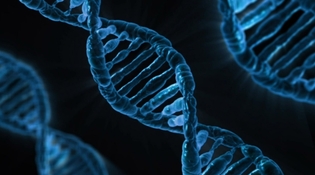 loading
loading
FindingsA breakthrough in gene therapyScientists succeed in curing sick mice by editing their DNA.  Wikimedia CommonsView full imageWhat if physicians could correct dangerous genetic mutations in living patients? It would be an extraordinary medical breakthrough. Researchers at Yale recently devised a clever new approach to do just that in mice born with inherited anemia. And yes, the mice recovered. Beta thalassemia is a genetic disorder that produces faulty hemoglobin and misshapen blood cells. It’s often caused when a single DNA base pair is mutated, as if a page of text had one incorrect letter. Radiology professor Peter Glazer ’87MD, ’87PhD, engineering professor Mark Saltzman, and their colleagues figured out how to reach that misspelling in mouse cells and how to get the cells themselves to fix it. Their findings were published online in Nature Communications. Using an IV, the team injected the mice with nanoparticles containing a material called PNA—long used to bind to DNA—plus a length of normal hemoglobin DNA. When a nanoparticle entered a bone marrow cell, the PNA elbowed into the mouse’s own DNA. The result was a triple helix. Alerted by that unnatural state, the cell’s DNA-repair machinery hurried in. Using the normal DNA as a repair template, the cell corrected its own mutated gene. A few weeks later, normal red blood cells started showing up in the bloodstreams of the mice. After several months, the mice had normal hemoglobin levels, and their swollen spleens—a hallmark of thalassemia—had shrunk back down. Nor is it limited to cells in a dish. “The big difference is we can do this in a living animal, and hopefully in a person, by an IV,” Glazer says. He anticipates human studies in two years.
The comment period has expired.
|
|